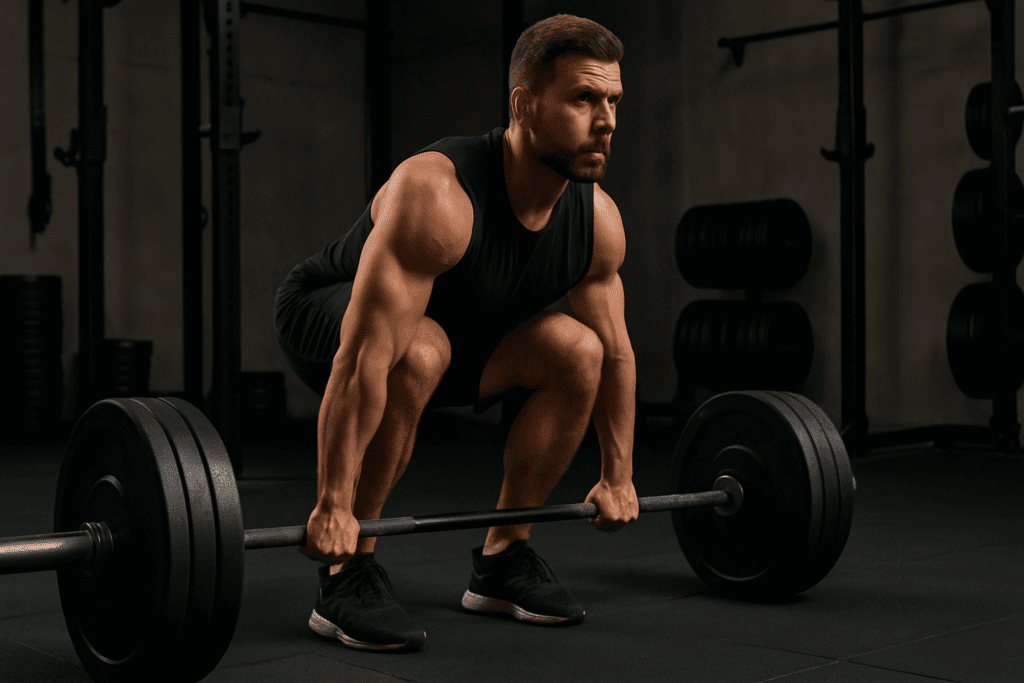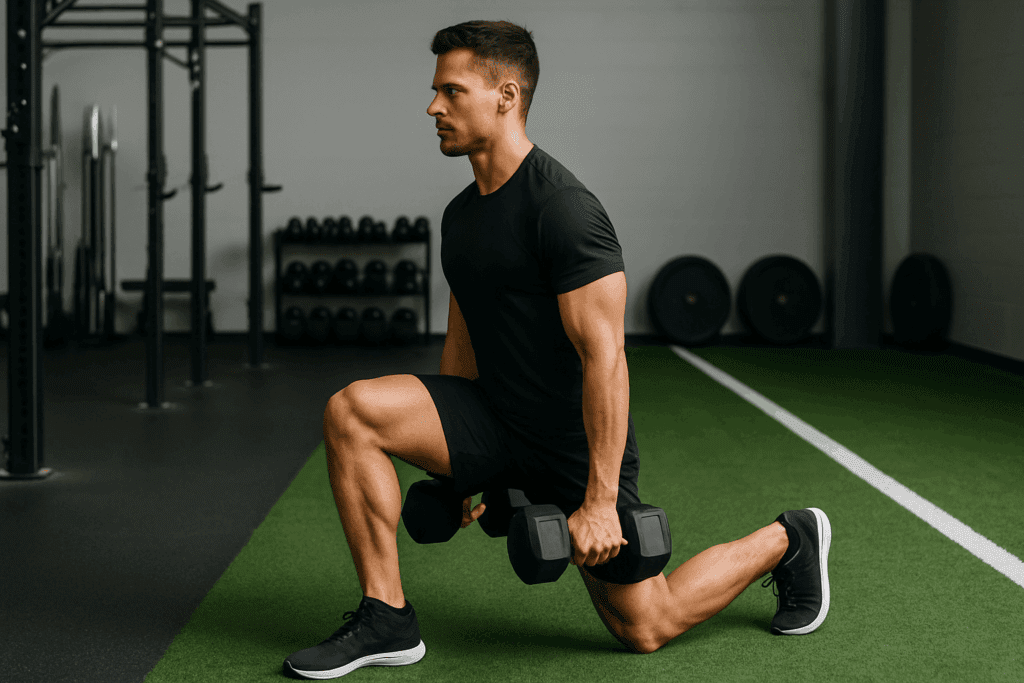Unleashing Strength and Stamina: Why Muscular Training Is Essential for Peak Performance
Muscular strength is the cornerstone of physical performance, enabling individuals to lift, push, pull, and move with power and efficiency. Whether you’re an elite athlete or simply looking to improve your day-to-day vitality, engaging in exercises for muscular strength can significantly enhance your endurance, stamina, and overall well-being. In today’s fitness landscape, where functional movement and longevity are gaining emphasis, the importance of well-rounded strength training cannot be overstated. It’s not just about aesthetics—it’s about performance, injury prevention, and maximizing your body’s potential.
You may also like: How to Increase Stamina and Endurance Naturally: Smart Training Tips and Nutrition Habits That Support Cardiovascular Fitness
For those training for endurance events or aiming to push their athletic limits, incorporating different types of strength exercises into your regimen can be a game-changer. Strength supports stability, protects joints, and allows for sustained exertion across long durations. The best exercises for fitness and strength combine full-body engagement with progressive overload to build resilience and muscular adaptation over time. And while the term “strength” often conjures images of heavy barbells, the reality is that muscular development spans a broad spectrum—from isometric holds and resistance bands to compound lifts and explosive power movements.
This article explores 10 muscular strength exercises designed to improve body strength and boost endurance naturally. Each movement serves as an example of muscular strength exercises that can be tailored to any fitness level. As we walk through these powerful tools for transformation, we’ll examine how these exercises not only serve as examples of strengthening exercises, but also as foundational activities of muscular strength that support long-term physical health and peak athletic performance.

Deadlifts: The King of Full-Body Strength and Endurance Development
Among all strength-building tools, the deadlift stands tall as one of the most complete and effective examples of muscular strength exercises. It recruits multiple large muscle groups—glutes, hamstrings, quads, core, and upper back—simultaneously, making it a foundational lift for any athlete. Deadlifts aren’t merely about raw strength; they demand coordination, proper technique, and mental focus, making them a superior example of exercises for strength and flexibility as well.
What sets deadlifts apart from other training exercises is their real-world functionality. They mimic the natural action of lifting objects from the ground, which means they train your body to perform better during everyday tasks while reducing injury risk. In terms of energy expenditure and muscle recruitment, deadlifts are one of the most metabolically demanding exercises for muscular strength, helping to build power and cardiovascular capacity when performed in higher volume sets.
Progressive overload is key in deadlifting, but that doesn’t mean beginners are excluded. Starting with lighter loads and focusing on form helps lay the foundation for long-term strength development. Over time, incorporating variations like Romanian deadlifts or sumo stance deadlifts can introduce new stimulus and challenge the muscles in different planes. Whether used for maximal strength training or endurance-focused circuit routines, deadlifts remain one of the best examples of strengthening exercises to include in a comprehensive fitness program.

Push-Ups: The Foundational Upper-Body Exercise for Strength and Control
Push-ups are often underestimated due to their simplicity, but they are among the most efficient and accessible strength exercises types available. This bodyweight movement requires no equipment yet offers substantial benefits when executed with intention and variation. Serving as both an exercise to develop strength and a tool for improving muscular control, push-ups engage the chest, shoulders, triceps, core, and even the glutes when done correctly.
One of the most appealing aspects of push-ups is their adaptability. Beginners can start with modified versions, such as knee push-ups or incline push-ups, while more advanced practitioners can progress to decline or archer push-ups for increased difficulty. Each variation presents a new opportunity to challenge the muscles in unique ways, emphasizing different types of strength exercises through tempo changes, range of motion, and stability control.
Push-ups also offer a fantastic way to enhance endurance, especially when incorporated into high-repetition sets or interval training circuits. They condition the upper body to sustain effort over time and can easily be combined with other activities of muscular strength for total-body routines. When performed correctly, push-ups are a versatile and effective example of muscular strength activities that deliver powerful results across all fitness levels.

Squats: Powering Up the Posterior Chain and Functional Mobility
Squats represent one of the quintessential examples of exercises for strength, especially when it comes to building lower-body power and mobility. As a compound movement that targets the quadriceps, glutes, hamstrings, and core, squats offer unmatched functionality and performance enhancement. They closely mimic real-world movement patterns such as sitting, climbing, and lifting, which means their benefits extend far beyond the gym.
The different types of strength exercises within the squat family include bodyweight squats, goblet squats, front squats, and back squats—all of which emphasize different movement mechanics and muscle recruitment patterns. These variations allow athletes and fitness enthusiasts to tailor their training based on their goals, whether they aim to increase absolute strength, build muscular endurance, or improve range of motion.
Moreover, squats are an excellent exercise for strength and flexibility. They require mobility in the ankles, hips, and thoracic spine, encouraging joint health and balance throughout the kinetic chain. When loaded properly and executed with proper form, squats help stimulate muscle hypertrophy, enhance metabolic output, and fortify the core, making them one of the most dynamic and effective examples of strengthening exercises available today.

Pull-Ups: The Ultimate Test of Upper-Body Strength and Athleticism
Pull-ups have long been regarded as a hallmark of upper-body strength, demanding both muscle coordination and raw pulling power. As one of the most iconic exercises for muscular strength, pull-ups engage the lats, rhomboids, traps, biceps, and core—all essential for back health and shoulder stability. While they may be challenging for beginners, they provide an unparalleled stimulus for muscle development and overall endurance when properly integrated into a training program.
Because pull-ups require you to lift your entire bodyweight, they exemplify the kind of training exercises that build both strength and body awareness. Variations such as chin-ups, wide-grip pull-ups, and neutral-grip pull-ups allow for targeted adjustments that stimulate different parts of the upper body and avoid overuse. These variations highlight how examples of muscular strength exercises can be both functional and scalable.
Pull-ups can be progressed through resistance bands or assisted machines, while advanced athletes may add external weights to increase resistance. In performance-focused regimens, pull-ups often serve as a benchmark for upper-body endurance and power-to-weight ratio. They are more than just a back exercise—they are a holistic activity for strength development that supports posture, mobility, and neuromuscular control.

Lunges: Building Unilateral Strength, Balance, and Coordination
Lunges are one of the best exercises for fitness and strength, especially for individuals seeking to improve balance, joint integrity, and lower-body endurance. Unlike bilateral movements like squats, lunges work one leg at a time, which forces the body to engage stabilizing muscles that are often underutilized. This unilateral aspect makes them a highly effective exercise to develop strength, especially when imbalances or mobility limitations are present.
There are many different types of strength exercises within the lunge category. Forward lunges, reverse lunges, walking lunges, and lateral lunges all challenge the body in unique planes of motion. These variations support functional movement patterns used in sports and everyday activities, making them essential for well-rounded performance enhancement. Because lunges also stretch the hip flexors and engage the core, they qualify as exercises for strength and flexibility.
Additionally, lunges demand cardiovascular effort when performed in sequence, contributing to improved endurance and stamina. By training each leg individually, they also help prevent overcompensation and reduce injury risk, especially for runners, cyclists, and athletes who rely heavily on repetitive movement. Lunges are a prime example of muscular strength activities that blend functionality with endurance, creating a powerful foundation for athletic performance.
Frequently Asked Questions: Muscular Strength and Endurance Training
1. How can I structure a weekly routine using 10 muscular strength exercises without overtraining?
Creating a balanced weekly routine that includes 10 muscular strength exercises requires a thoughtful approach to volume, intensity, and recovery. One effective method is to divide the exercises into upper-body and lower-body days, allowing muscles adequate time to recover between sessions. Incorporating different types of strength exercises on alternating days—such as compound lifts on one day and accessory movements on another—can help prevent burnout while promoting continual adaptation. For example, if you include exercises like squats, deadlifts, and pull-ups early in the week, you can follow up with lunges, push-ups, and overhead presses later to diversify stimulus and target complementary muscle groups. By rotating exercises for muscular strength throughout the week and integrating rest or active recovery days, you can train efficiently without compromising performance or safety.
2. What role does tempo play in training exercises for muscular strength and endurance?
Tempo refers to the speed at which you perform different phases of an exercise, and it’s a highly underrated factor in strength development. Manipulating tempo during training exercises allows you to target specific adaptations—slower eccentric movements (the lowering phase) create greater muscle tension and promote hypertrophy, while explosive concentric movements (the lifting phase) develop power and speed. For example, a tempo-controlled push-up or squat enhances neuromuscular coordination and increases time under tension, making them more effective examples of strengthening exercises for both performance and muscle control. Integrating tempo variations into your weekly sessions also reduces reliance on heavy loads, which can be beneficial for joint health and injury prevention. Ultimately, applying tempo manipulation transforms common activities of muscular strength into advanced training tools that challenge endurance and control simultaneously.
3. Are there lesser-known examples of muscular strength activities that also support flexibility and mobility?
Absolutely. While traditional strength movements are vital, many underutilized exercises contribute significantly to strength and flexibility. Movements such as Jefferson curls, Cossack squats, and weighted mobility flows not only enhance joint health but also act as hybrid examples of exercises for strength and flexibility. These exercises improve the body’s active range of motion, allowing muscles to contract more efficiently across extended positions. As a result, incorporating these movements complements the best exercises for fitness and strength by addressing both muscular stiffness and range limitations. Including such dynamic strength exercises types can also support athletic longevity and reduce the risk of compensatory movement patterns that often lead to injury.
4. How do examples of muscular strength exercises contribute to postural alignment and long-term joint health?
Exercises for muscular strength aren’t just about muscle size or max reps—they’re instrumental in maintaining proper posture and joint integrity. Movements like Romanian deadlifts, face pulls, and overhead carries emphasize postural control and scapular stability, reinforcing optimal alignment during both training and everyday tasks. These training exercises help correct muscular imbalances, such as dominant hip flexors or weak glutes, which often contribute to back pain or poor lifting mechanics. Over time, consistent implementation of such examples of muscular strength activities conditions stabilizing muscles that support the spine, shoulders, and knees, significantly reducing the wear and tear associated with poor movement habits. Incorporating these into a long-term plan creates a more resilient, functional body that performs better across both athletic and daily settings.
5. What are some progressive ways to advance bodyweight-based examples of exercises for strength?
Advancing bodyweight training involves more than just increasing reps—it’s about manipulating variables such as leverage, surface instability, and mechanical disadvantage. For instance, transitioning from a basic push-up to a single-arm push-up or incorporating elevated surfaces can dramatically increase the difficulty. The same applies to squats, which can progress to pistol squats or Bulgarian split squats, both of which are advanced examples of muscular strength exercises. These variations build strength through challenging positions that demand increased coordination and balance, making them suitable for athletes looking to improve both performance and muscular control. By continually evolving the difficulty of bodyweight exercises, you maximize their value as activities of muscular strength and ensure ongoing adaptation without external resistance.
6. How can athletes personalize examples of strengthening exercises based on their sport-specific goals?
Sport-specific training is most effective when it aligns with the athlete’s movement demands, energy systems, and injury risks. For example, a sprinter may benefit more from unilateral explosive lunges and resisted sprints, while a swimmer may prioritize pull-up variations and scapular stability drills as their core exercises for muscular strength. Each sport has its own biomechanical needs, which means selecting examples of strengthening exercises should be guided by an understanding of movement efficiency, joint loading, and recovery. Athletes can modify tempo, resistance, and range of motion within each exercise to target different muscle actions—concentric, eccentric, and isometric—for a more tailored outcome. Understanding the intent behind each movement allows you to align examples muscular strength training with the real-world demands of your performance environment.
7. What are the mental and psychological benefits of integrating strength-focused routines into endurance training?
While physical benefits are often emphasized, the psychological impact of combining endurance with strength training is equally profound. The focus and discipline required to complete challenging examples of strengthening exercises can enhance mental resilience and emotional regulation. For endurance athletes, who often face long durations of repetitive motion, adding strength routines introduces variety and cognitive stimulation. Furthermore, as athletes begin to see progress in their strength metrics, their confidence, motivation, and body awareness tend to improve. This dual focus on mental and physical growth positions strength exercises types as holistic tools not only for performance but also for fostering a mindset of grit, consistency, and long-term well-being.
8. How do training environments and equipment availability affect your approach to different types of strength exercises?
Training settings—whether at home, in a gym, or outdoors—can heavily influence your selection and execution of strength exercises. Limited access to barbells or machines might initially seem like a barrier, but with creativity and proper programming, you can perform most examples of muscular strength exercises using bodyweight, resistance bands, or simple free weights. For instance, a sandbag can replace a barbell for deadlift variations, and suspension trainers can be used to modify push or pull movements. These adaptations help maintain training consistency while ensuring the core principles of progressive overload, stability, and range of motion are respected. The versatility of training exercises means that strength and endurance gains are not confined to traditional gym environments, making functional strength accessible anywhere.
9. What strategies can help prevent plateaus when practicing exercises for muscular strength long-term?
Plateaus often arise when the body becomes too accustomed to a specific routine. To continue progressing with exercises for muscular strength, it’s essential to introduce variation through periodization, overload, and movement diversity. Rotating between strength exercises types—such as shifting from bilateral to unilateral movements or incorporating eccentric overload—can help break through stagnant phases. Additionally, adjusting rep schemes, rest periods, and the inclusion of explosive or isometric holds within training exercises introduces new stimuli for adaptation. Tracking metrics such as time under tension, bar speed, and perceived exertion can also guide intelligent modifications that support consistent growth. Avoiding plateaus is not about constantly working harder, but rather training smarter with purposeful, data-driven shifts in strategy.
10. In what ways can strength training support injury recovery and prevention more effectively than passive therapies alone?
While passive modalities like massage or stretching have their place in recovery, strength training offers active rehabilitation through controlled load and targeted muscular engagement. Strategic inclusion of exercises to develop strength around injured or vulnerable joints enhances tissue resilience and supports neuromuscular reeducation. For instance, implementing single-leg balance drills or tempo-controlled lunges can gradually restore function while minimizing joint stress. Many physical therapists now emphasize strength-based interventions as first-line tools for recovery, citing their ability to address both biomechanical inefficiencies and psychosocial factors associated with pain. Ultimately, integrating examples of muscular strength activities during recovery fosters autonomy, improves movement confidence, and supports a faster, more sustainable return to full function.
Overhead Press: Strengthening the Shoulders, Core, and Mental Focus
The overhead press is a demanding yet rewarding upper-body movement that exemplifies how to improve body strength in a structured and scalable way. It targets the deltoids, triceps, and upper chest while also requiring activation of the core, glutes, and stabilizers to maintain a strong, upright posture. This makes it a comprehensive full-body movement and an excellent example of strengthening exercises for athletes focused on performance and injury prevention.
Executing an overhead press with proper form requires not just strength, but also mobility and neuromuscular coordination. The movement challenges shoulder stability and thoracic spine mobility—areas often neglected in modern sedentary lifestyles. Whether performed with dumbbells, kettlebells, or a barbell, this exercise helps build resilience in the upper body and fortifies the kinetic chain.
As one of the classic strength exercises types, the overhead press serves as a pillar in both bodybuilding and athletic training programs. It also has applications for improving endurance when used in high-volume circuits or paired with lower-body movements. By developing upper-body power and control, the overhead press contributes meaningfully to any program centered around exercises for muscular strength and performance.
Was this article helpful? Don’t let it stop with you. Share it right now with someone who needs to see it—whether it’s a friend, a colleague, or your whole network. And if staying ahead on this topic matters to you, subscribe to this publication for the most up-to-date information. You’ll get the latest insights delivered straight to you—no searching, no missing out.
Further Reading:
How to Increase Stamina: 16 Ways to Power Up a Workout
How to Get a Full-Body Strength Training Workout at Home
What Is Muscular Strength, and What Are Some Exercises You Can Do?

